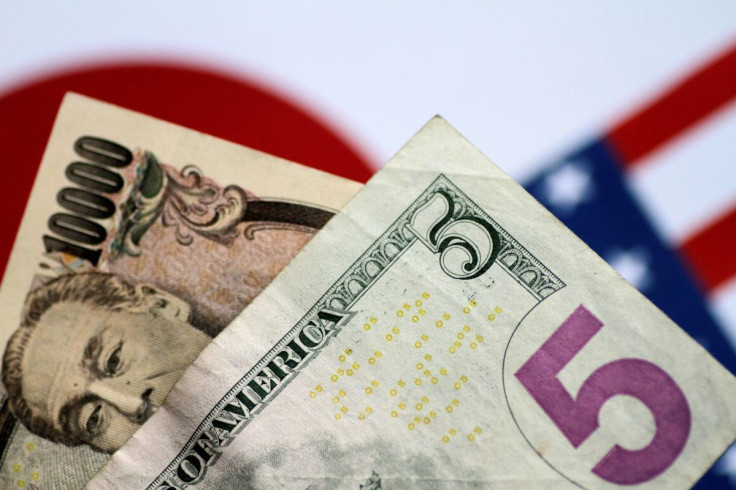Dollar Rises After Robust U.S. Jobs Data, Euro Dips

The dollar rose on Friday, helped by robust U.S. job growth numbers for March that firmed market expectations that the Federal Reserve will increase the pace of interest rate hikes in an effort to blunt rising inflation.
The nonfarm payrolls report showed that 431,000 jobs were added last month, versus estimates of 490,000, while data for February job increases were revised higher. The unemployment rate dropped to 3.6%, lowest since February 2020.
"Another strong print is sustaining expectations for two or more jumbo-sized Fed hikes in the coming months and has added to momentum driving the dollar higher," said Karl Schamotta, chief market strategist at Corpay.
Futures contracts tied to the Fed's policy rate fell after the jobs report, pointing to expectations that the Fed will hike by a half-a-percentage point at each of its next three meetings to deal a more decisive blow to price pressures. That would follow a quarter-point hike on March 16, when the Fed embarked on a new tightening cycle.
The dollar index, which gauges the greenback against six counterparts, including the euro, was up 0.314% at 98.627 at 3:10 p.m. EDT, building on Thursday's 0.5% climb.
For the week, the dollar was nearly flat, having rebounded from a midweek decline as hopes over Russia-Ukraine peace talks faded, boosting safe-haven demand for the American currency.
"Global risk sentiment continues to deteriorate and lift the greenback as hopes for a ceasefire in Ukraine fade," Schamotta said.
The euro failed to find any support from surging euro zone inflation, which climbed to 7.5% in March, hitting another record high and raising pressure on the European Central Bank (ECB) to rein in runaway prices even as growth slows sharply.
"We still think that as much as inflation is set to intensify further in the Eurozone, the ECB is likely to wait it out this quarter to see how the bloc evolves with the shock emanating from the war in Ukraine, though we think the ECB is on borrowed time and will need to hike this year," analysts from TD Securities said in a note.
The euro was 0.24% lower versus the greenback at $1.10395. The single currency retreated sharply on Thursday after hitting a one-month high earlier in the session, as hopes for a ceasefire in Russia's invasion of Ukraine faded. Peace talks were ongoing on Friday.
Versus the Norwegian crown, the euro fell 0.7% to 9.6599 as the commodity-linked currency rebounded from Thursday's sharp declines. The Norwegian crown also rose 0.56% versus the dollar.
"We regard NOK to be caught in a tug of war between rising global recession risks and rising global commodity prices. As long as the global inflation narrative thrives NOK assets are likely to be in high demand," said Kristoffer Kjaer Lomholt, Head of FX at Danske Bank.
Another commodity-linked currency, the Australian dollar, rose 0.15% to $0.74965.
The Russian rouble has recovered to levels last reached in the days before Russia launched its invasion in February, defying predictions that the war would send it into freefall.
© Copyright Thomson Reuters 2024. All rights reserved.





















